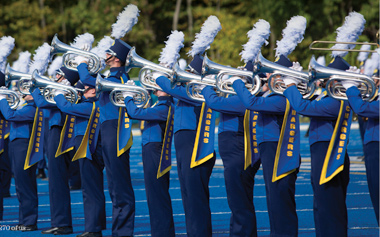
Marching Band
We Are Family
While the Chargers marching band has grown dramatically over the past decade, its devoted musicians — now 270 strong — have formed a powerful bond.
ALUMNI MAGAZINE
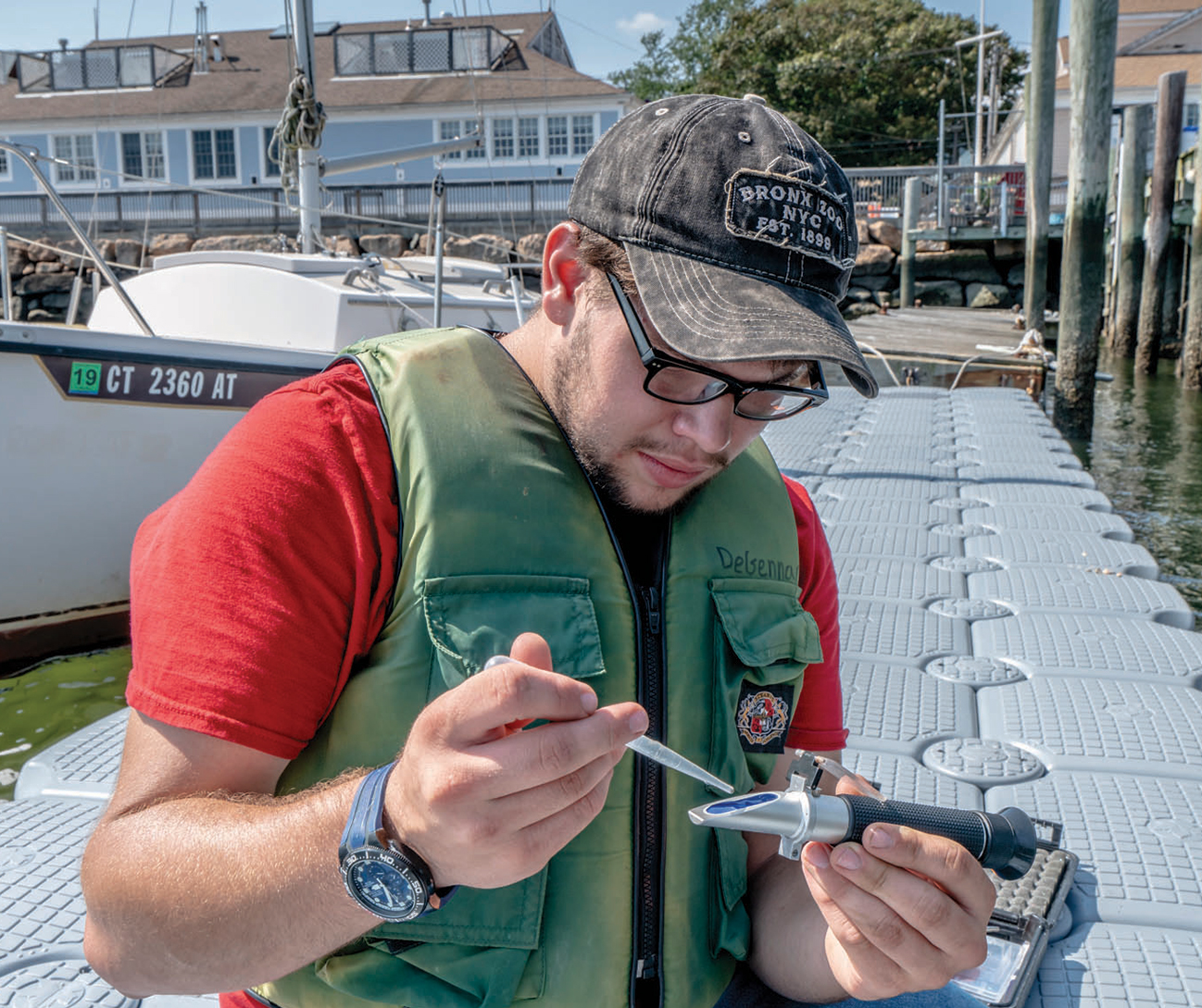
The latest in new research and cross-disciplinary findings from University of New Haven faculty and industry experts.
The arts, environmental science, and marine biology converge in a cross-disciplinary research project on the ecosystem of Long Island Sound. The research team includes Robert Rattner, a lecturer in the Department of Art and Design, and Environmental Science Professor Roman Zajac, Ph.D. (both from the College of Arts and Sciences), in collaboration with Kyle DeGennaro ’19, a marine biology major and a photography minor. By photographing PVC plates installed at multiple test sites in the Sound, Rattner and DeGennaro are recording changes in the structure and biodiversity of marine fouling communities — groups of organisms found on artificial surfaces like the sides of docks, marinas, harbors, and boats, including both native and invasive species. The researchers use advanced digital photographic equipment to record the plates over time. Exploring optimal angles and lighting configurations, the team can quickly collect data, which is then shared with outside experts and collaborators. Rattner and DeGennaro want to archive their data on underwater communities in an electronic database that can be accessed and enhanced by researchers globally. The ability to study native and invasive species dynamics over time will serve as an important historical reference for scientists decades from now, possibly informing future research.
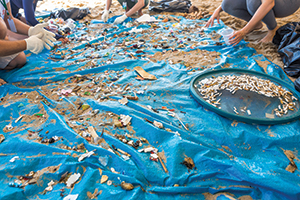
According to a report released earlier this year by the Ocean Conservancy — an organization founded in 1972 whose mission is to seek solutions for a healthy ocean and the wildlife communities that depend on it — more than 2.4 million cigarette butts were collected in 2017 during ocean cleanup efforts around the globe. The report reveals that cigarettes are the leading type of litter picked up during these cleanup efforts. Cigarette filters can take 25 years to decompose, and fish and birds, mistaking them for food, often ingest them.
The residual toxins, in a majority of cases, prove fatal to these animals. Matthew Paulus ’20, a digital design major, is working with Assistant Professor of Art and Design Guy-Serge Emmanuel, M.F.A., in the College of Arts and Sciences on a research project titled "The Butt of a Joke." The project, which involves a series of animations that use humor and irony to capture viewers’ attention, provides a creative and effective way to educate smokers and encourages them to discard cigarettes responsibly.
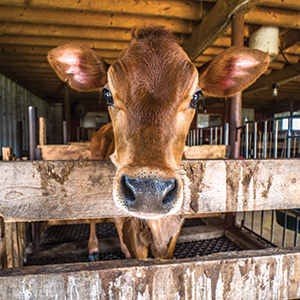
Virginia M. Maxwell, D.Phil., conducts research on preventing fatal disease in cows on dairy farms and investigating crimes related to animal cruelty. Dr. Maxwell is assistant dean and associate professor of forensic science in the Henry C. Lee College of Criminal Justice and Forensic Sciences, and her work pairs analytical chemistry and forensic sciences. She and her students are developing a test strip, similar to what diabetics use to monitor their daily sugar levels, that will gauge calcium levels in dairy cows. These calcium levels can quickly deplete during pregnancy and birth and cause a sometimes fatal condition called milk fever.
Local farms will soon serve as test sites for this practical innovation, an inexpensive and efficient means to identify cows at risk and prevent the disease from threatening livestock. Dr. Maxwell and her students are working on a similar strip to test dogs for ketamine, a powerful sedative often used in dog-fighting rings. The ability to quickly test dogs for the presence of ketamine could expedite investigations against animal abusers. Dr. Maxwell also volunteers as a forensic consultant to assist in the prosecution of animal cruelty cases.

Perception is a recurring theme across multiple research studies conducted by Kento Yasuhara, Ph.D., assistant professor of psychology and criminal justice in the College of Arts and Sciences and the Henry C. Lee College of Criminal Justice and Forensic Sciences, respectively.
Dr. Yasuhara’s work focuses on misconceptions surrounding mental illness and forms the foundation for a training program to prepare his students, many of whom go on to pursue careers in law enforcement, for crisis intervention.
Dr. Yasuhara also collaborates with Ibrahim (Abe) Baggili, Ph.D., Elder Family Chair and associate professor of computer science in the Tagliatela College of Engineering, to study the public’s perception of hackers. Results have shown that people who commit a particularly egregious crime — murder, for example — are universally viewed as "bad." But the jury is still out on those who hack an organization’s computer network. In fact, findings reveal that even when cybercriminals have an overwhelmingly altruistic purpose, there remains no public consensus on morality. The results become even more meaningful in an era when cybercrime is on the rise.
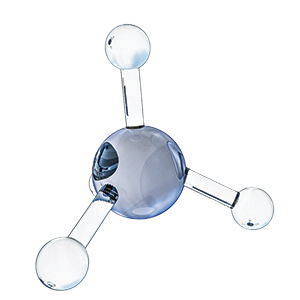
Kristine Horvat, Ph.D., an assistant professor of chemical engineering in the Tagliatela College of Engineering, is interested in finding alternative, cleaner energy sources. Dr. Horvat focuses much of her research on gas hydrates, a crystalline form of water that contains gas molecules. Gas hydrates look and act much like ice, with one exception: they contain a large amount of methane, the primary component of the natural gas that we burn for energy.
Burning methane is more CO2 efficient than any other fossil fuel — it’s twice as efficient as burning coal, for example. This more environmentally friendly energy potential is what drives Dr. Horvat’s research.
There is, however, a catch. Hydrate deposits generally occur in marine and permafrost environments far below the sea’s surface where they play a critical role in maintaining seafloor stability. Because of this, they are a challenge to extract and study. A new and promising approach for recovering methane is the exchange of these deposits in stable gas hydrates with carbon dioxide. Dr. Horvat and Stacie Meruelo ’19, a chemical engineering major, are studying CO2 hydrate formation in various water solutions, including salt water, and in the presence and absence of sand, to reveal the best conditions for its formation. Their goal is to understand the thermodynamics and kinetics of this exchange process.
Mary Isbell, Ph.D., may study 19th-century literature and culture, but the methodology she uses in her research is anything but Victorian. Isbell works within the realm of digital humanities, a field that applies computational tools and methods to disciplines such as literature, history, and philosophy. Her focus is on digital scholarly editing. Drawing from a digital archive of manuscripts, microfilm, and rare book materials, Dr. Isbell pieces together stories from the past. Her personal research uncovered the little-known history of shipboard theatricals aboard 19th-century naval vessels, determining how these performances established cultural hierarchies among navy officers and sailors.
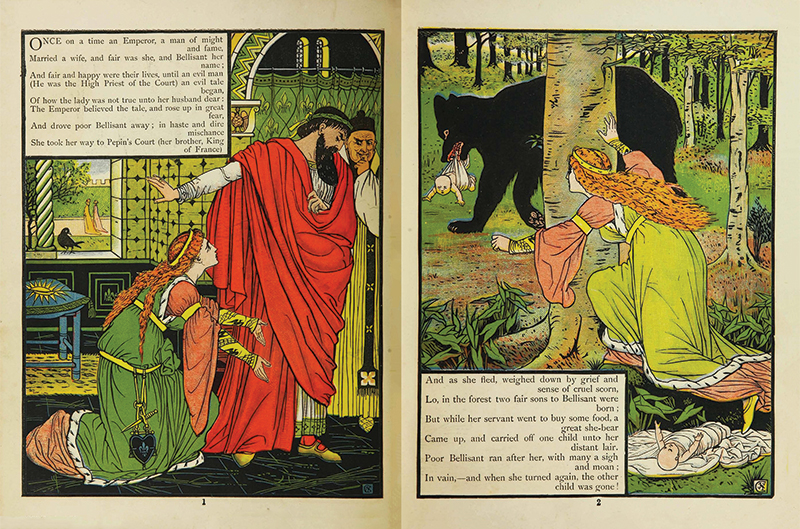
In her role as professor, Dr. Isbell is mentoring Anna Kroon ’19, an English major who received a summer undergraduate research fellowship (SURF) to study children’s literature, the theme of her senior honors thesis. Kroon is examining and photographing rare editions of the story Valentine and Orson, which was first published in 1505 for a general audience but later classified as children’s literature. By transcribing and encoding different versions of the text for online publication, Kroon allows for a more thorough analysis of how and why this story changed over the past five centuries.

While the Chargers marching band has grown dramatically over the past decade, its devoted musicians — now 270 strong — have formed a powerful bond.
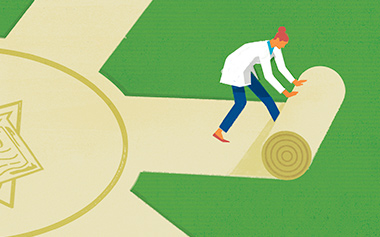
Welcome to the newly established School of Health Sciences.

Former Chargers captain and current Board of Governors member Allen Love Jr. ’88, MPA ’90 lends a global perspective to the world of anti-money laundering.